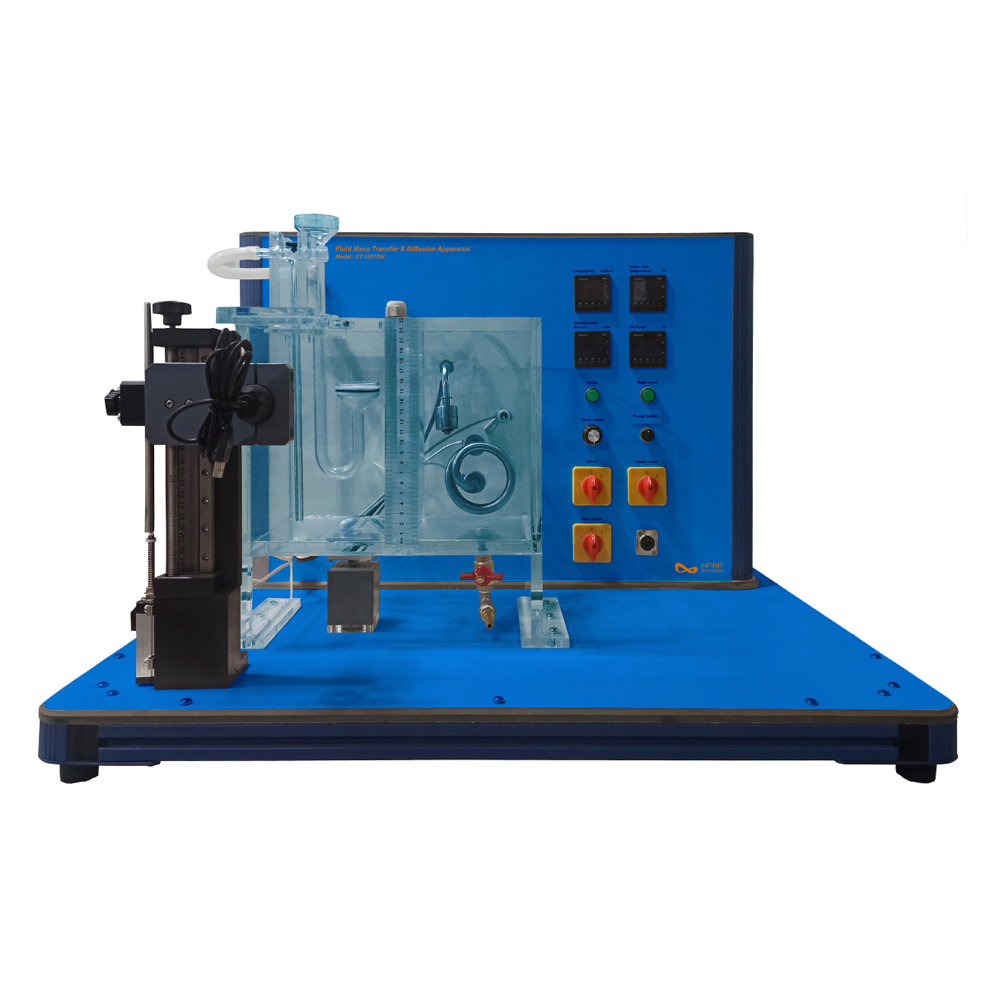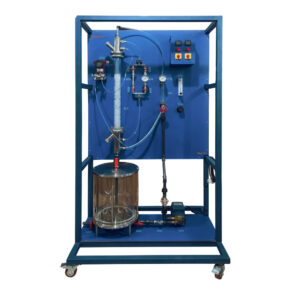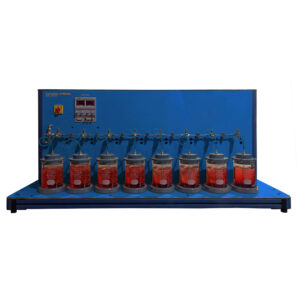Due to changes in concentration, microscopic mass transfer of particles like atoms, molecules, and ions occurs through diffusion. It is critical to a number of processes. Diffusion, for instance, can assemble the components of chemical reactions, and it sometimes acts as the process’s rate limiting phase. Two experimental devices for studying gas and liquid diffusion are included with CRE-3301. A concentrated salt solution is used to study diffusion in liquids. A U-shaped tube holding the solution contains a disc at one end with a number of vertical capillaries. The capillary disc is positioned below the water’s surface when the U tube is submerged in a tank of demineralized water. The salt ions exit the U-tube through the capillaries and into the demineralized water due to the concentration difference between the water and the solution.
The ions only flow in one dimension due to the capillaries. The presence of a stirrer in the tank prevents concentration variations in the tank by preventing the salt concentration from rising close to the disc. The amount of salt in the tank is measured using a conductivity meter. A very volatile solvent is used to study diffusion in gases. A vertical tube containing the solvent is submerged in a hot water bath. The solvent evaporates as a result of the water bath’s thermal energy. At the tube’s upper end, an air flow created by a fan travels horizontally. Due to the concentration gradient from the liquid solvent’s surface up to the flow of pure air, the gaseous solvent diffuses. The solvent molecules are carried away by the air flow, maintaining a constant concentration at the tube’s upper end. Over time, the liquid solvent in the tube loses volume. It is possible to determine the level using a scale microscope. The temperature in the water bath is controlled by a heater.
Technical Data
Tank with stirrer: approx. 6000mL
Magnetic Stirrer
- Speed stirrer: 0~500rpm
- Magnetic stirrer bar: 1
Heater
- Heater Power: approx. 300W
Diffusion Tube for liquid diffusion
- Type: U-Tube
- Capillaries: 250~300
- Diameter: 1mm
- length: 5~8mm
Conductivity Meter
- Range: 0~2000uS/cm
- Graduation: 1uS/cm
Diffusion tube for gaseous diffusion
- diameter: 4mm
- length: 100mm
- Fan: 120~320L/h
Microscope
- Microscope scale division: 0.1mm
Measuring ranges
- Temperature: 100~400°C
- Conductivity: 0~200mS/cm
Software: CRE-3301SW (optional)
DAQ software specially designed in National Instrument™, LABVIEW™ environment to measure and calculate the results of apparatus. The software is optional and while using software a set of electronic sensors are included. Software can be run with any Windows™ environment.
Scope of delivery
- 1 experimental unit
- 1 display and control unit
- 1 conductivity meter
- 1 microscope
- 1 magnetic stirrer with1 magnetic stir bars
- 1 stopwatch
- 1 set of instructional material




